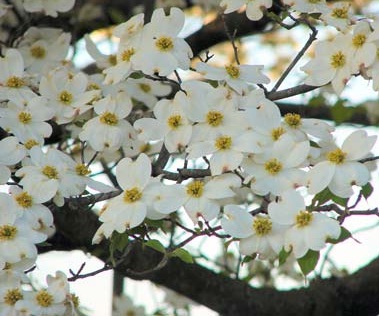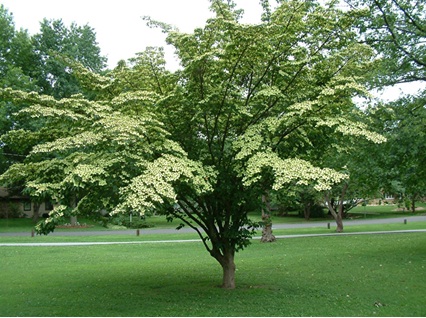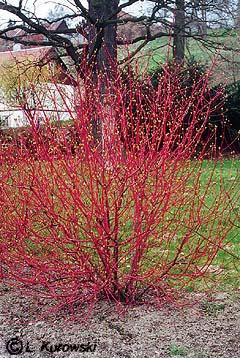Categories
Calendars
Guides
Reviews
Archive
Gallery
Articles
Ask Our Gardening Expert
Cornus (Dogwood)
Dogwoods are attractive, deciduous spreading trees grown for their simple spring flowers, colourful autumn foliage and brightly coloured winter stems.
It is a worthwhile planting, having interest through the year. They grow to 5m, most have simple, pointed leaves and there are also some variegated forms. The blooms have four simple petals, white on opening, turning to a pink tint as they age. Flowers are followed by large, round fruit, best seen on C. kousa and C. capitata. The best autumn colour is found on C. nuttalli and the brightest winter shoots belong to C. stolonifera. They can be grafted,grown from stratified seed or propagated from cuttings.
Dogwood in flower
Cornus kousa
Cornus alba 'Sibirica'
As well as trees, dogwood varieties form well-known shrubs, again with distinctive coloured bark on their younger shoots and growing to 3m. (Cornus alba, the Siberian dogwood) These varieties are best pruned back to the ground every spring to encourage new growth. Varieties form brightly coloured, white, yellow, red and lime green shoots. The shrub varieties have smaller flowers. ‘Elegantissima’ has leaves edged with white, ‘Kesselringii’ has purplish black stems and ‘Westonbirt’ has crimson stems. C. stolonifera ‘Flaviramea’ has greenish yellow stems. The shrubs forms are ultra hardy, their striking stems provide a striking winter background to an otherwise bare garden. They grow best in well cultivated, moist, fertile soils and in sun and partial shade. They can be easily propagated from hardwood cuttings and readily sucker.


